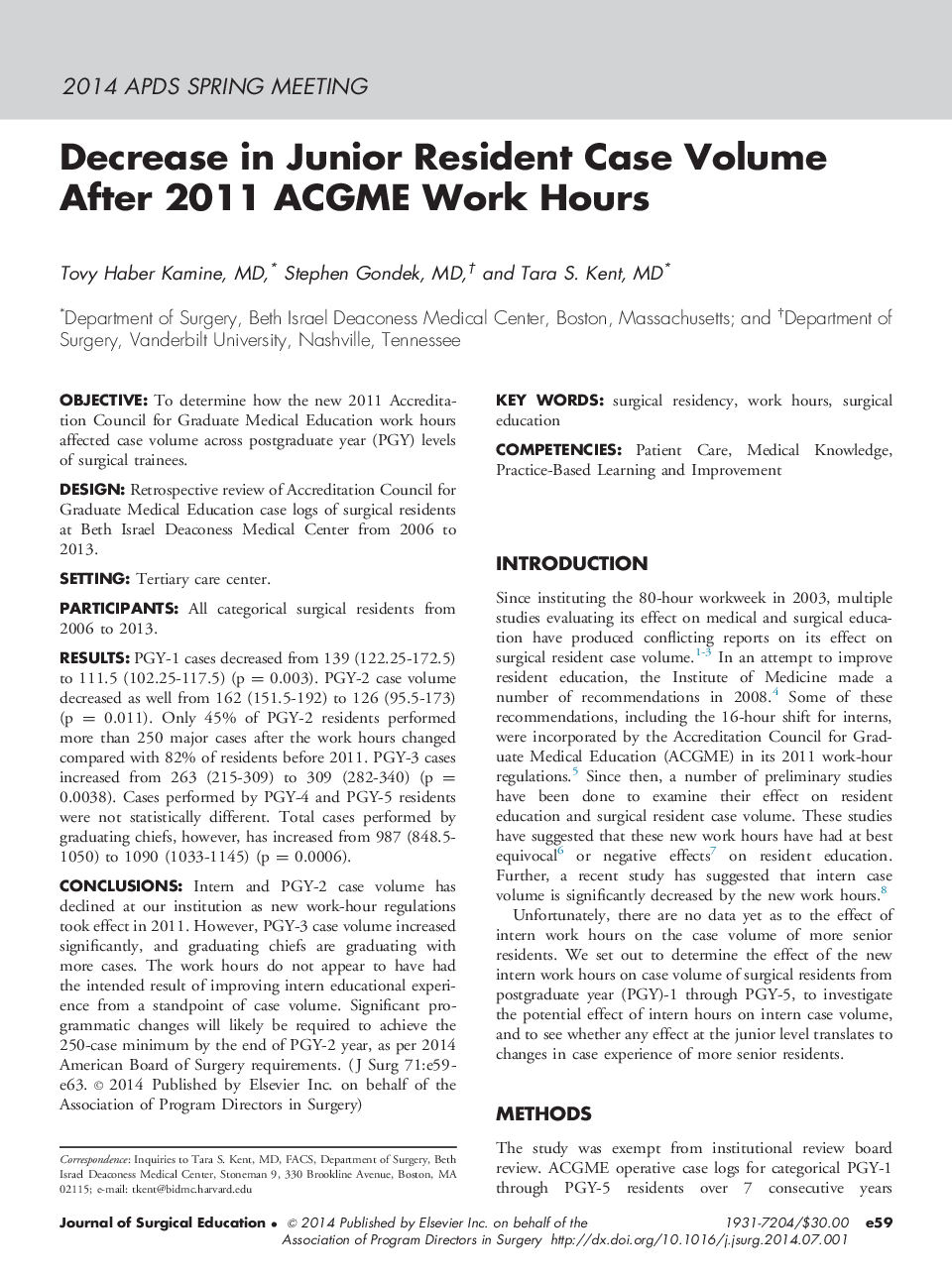| Article ID | Journal | Published Year | Pages | File Type |
|---|---|---|---|---|
| 4297901 | Journal of Surgical Education | 2014 | 5 Pages |
ObjectiveTo determine how the new 2011 Accreditation Council for Graduate Medical Education work hours affected case volume across postgraduate year (PGY) levels of surgical trainees.DesignRetrospective review of Accreditation Council for Graduate Medical Education case logs of surgical residents at Beth Israel Deaconess Medical Center from 2006 to 2013.SettingTertiary care center.ParticipantsAll categorical surgical residents from 2006 to 2013.ResultsPGY-1 cases decreased from 139 (122.25-172.5) to 111.5 (102.25-117.5) (p = 0.003). PGY-2 case volume decreased as well from 162 (151.5-192) to 126 (95.5-173) (p = 0.011). Only 45% of PGY-2 residents performed more than 250 major cases after the work hours changed compared with 82% of residents before 2011. PGY-3 cases increased from 263 (215-309) to 309 (282-340) (p = 0.0038). Cases performed by PGY-4 and PGY-5 residents were not statistically different. Total cases performed by graduating chiefs, however, has increased from 987 (848.5-1050) to 1090 (1033-1145) (p = 0.0006).ConclusionsIntern and PGY-2 case volume has declined at our institution as new work-hour regulations took effect in 2011. However, PGY-3 case volume increased significantly, and graduating chiefs are graduating with more cases. The work hours do not appear to have had the intended result of improving intern educational experience from a standpoint of case volume. Significant programmatic changes will likely be required to achieve the 250-case minimum by the end of PGY-2 year, as per 2014 American Board of Surgery requirements.
